Home » Posts tagged 'SEM'
Tag Archives: SEM
SEM and Systems Thinking
Christine Kerlin (2008) wrote that “Enrolment management is a comprehensive and coordinated process that enables a college or university to identify enrolment goals that are allied with its mission, its strategic plan, its environment, and its resources, and to reach those goals through effective integration of administrative processes, student services, curriculum planning and market analysis” (p.11). It is a holistic process that plays out across the student learning journey from inquiry to graduation. And its fundamental premise is that we must look at our enrolment health and sustainability throughout the entire student experience as we link, integrate, and extend enrolment management across our campuses.
Each of us has a role in developing and sustaining the SEM ecosystem on campus. We need to engage in shared responsibility. If SEM reflects institutional identity and culture, it becomes an institution-wide strategy owned by each member of the community. This is best achieved through lateral communication where open and frequent communication becomes part of the culture. Hossler, Bean, and associates (1990) said it well when they wrote “The more people involved in decision making, the greater the commitment to implementing the decision” (p. 35).
One of the best ways to do this is to adopt a systems thinking approach. Peter Senge (2006) described systems thinking as “…a discipline for seeing wholeness rather than parts, for seeing patterns of change rather than static snapshots, and for understanding the subtle interconnectedness that gives living systems their unique character” (pp. 68-60). Systems thinking allows SEM practitioners to create a fully embedded enrolment management system that engages campus leadership, faculty, the SEM steering committee, and operational working groups. We have long known that enhanced integration and participation of all key campus stakeholders is a necessary pathway to achieving enrolment management effectiveness on our campuses (Smith, 2000).
If you want to learn more about SEM and systems thinking, consider joining me for the “Systems Thinking is the Key to SEM Success” pre-conference workshop at this year’s SEMM Forum in Toronto on Tuesday, November 7th, from 9:00 a.m. to 12:00 p.m, at the Mariott Downtown at Toronto Eaton Centre. In this workshop, participants will learn and discuss the basics of systems thinking and how institutions can introduce and support the implementation of an enrolment management ecosystem.
-Clayton Smith
References:
Hossler, D., Bean, J. & Associates (1990). The strategic management of college enrollments. Jossey-Bass.
Kerlin, C. (2008). A community college roadmap for the enrollment management journey. College and University, 83(4), 10-14.
Senge, P. M. (2006). The fifth discipline: The art and practice of the learning organization. Doubleday. https://www.seeing-everything-in-a-new-way.com/uploads/2/8/5/1/28516163/peter-senge-the-fifth-discipline.pdf
Smith, C. (2000). The perceptions of college and university enrollment managers on the relationship between institutional enrollment performance and enrollment management effectiveness. College and University, 76(1), 15-19. https://doi.org/10.2190/DJCF-Q6MB-35AV-EBW
Pathways to Post-Pandemic Enrolment Growth in Higher Education
Recently, Stefanie Ivan, an enrolment management consultant and Royal Roads associate faculty, and I had an opportunity to facilitate a webinar on “Pathways to Post-Pandemic Enrolment Growth in Higher Education.” This is a follow-up webinar to the one we conducted on post-pandemic higher education enrolment trends (see my earlier blog) in February.
We asked participants to share their most effective strategic enrolment management (SEM) strategy efforts. We then asked them to describe strategies for enrolling and supporting international, Indigenous, and domestic learners. Lastly, we asked them to say a bit about the learner and student support they provided.
When asked to provide one word that describes the effectiveness of current SEM strategy efforts, the most frequently mentioned were disconnected, work-in-progress, and growing. Others identified include developing, unsure, hopeful but slow, disjointed, uninformed, innovative, ongoing, challenging, deepening, modest, and uncertain. It appears that the experience with SEM is quite variable with some saying it is stalled while others report it as in progress or growing.
We then asked about strategies in use to enrol/support specific types of students. Below are some of the comments we heard.
International Students:
- Work closely with our key agents and agent relations management; strengthen relational networks
- Develop a personal connection to the institution and community
- Targeting markets that connect with Canada’s labour shortage areas
- Provide incentives that are appealing to international students
- Optimize admissions processes
- Utilizing a group effort to recruit international students
- Develop personal communications
- Have not returned to accepting international students yet
Indigenous Students:
- Focused listening and working with communities to address their concerns and needs; engaging communities through partnerships
- Developed an Indigenous strategic plan
- Established an Indigenous scholars’ circle
- Increasing and deepening supports
- Going to communities with incentives, application forms, and testing formulas for completion on-site
- We are not currently recruiting Indigenous students
Domestic Students:
- Balancing in-person and online events
- More first-year transition strategies to help retention and success
- Target movement in the job market and second-career students
- Utilize a blended delivery model for full-time and part-time students
- Work toward understanding what students and employers
- Reach out to withdrawn student
- Establish better support services, create more webinars/engagement, partner with community organizations, and follow-up strategies
- Treat in-country ESL/ELL students as domestic prospects
Learner and Student Support:
- Online advising
- Development of non-academic learning communities
- Increased/streamlined communications (phone, email, forums, chatbot, extended hours, weekends)
- 1:1 wellness check-ins
- Alternative accommodations for learners who need it
- A strong return to in-person and social and co-curricular activities
- Entering students into classroom settings right away to determine learning needs
Here is the Video from the webinar.
With so much to do to stabilize and grow enrolments during these post-pandemic days, it will be important to be strategic and there is no better way to do this than through adopting and implementing SEM!
-Clayton Smith
Professor SEM
My higher education career has been all about Strategic Enrolment Management or SEM. From the beginning to now (and more to come!), I have learned about SEM, implemented SEM, and taught others about SEM. So, from being a practitioner, practitioner-scholar, and now a scholar, SEM has been at the centre of my professional life. Normally, I would not write about such things, but I couldn’t resist. It is my own way of starting off 2023 with a smile and a sense of pride.

Following a six-year run as director of the American Association of Collegiate Registrars and Admissions Officers (AACRAO) SEM Conference, Melanie Gottleib, AACRAO’s executive director, provided me with a special gift during our Toronto conference. It is a hooded sweatshirt with just three words imprinted on it, “AACRAO Professor SEM.” It fit 2022 perfectly with my promotion to professor last summer, being named editor-in-chief of Strategic Enrollment Management Quarterly, and the publication of the AACRAO book, “The Effectiveness of SEM in Canada: Reflections from the Field,” with long-time writing colleague Susan Gottheil. I will cherish it always!
Before rambling on, let me thank the many colleagues at AACRAO and my home institutions (the University of Maine at Augusta, Tallahassee Community College, State University of New York College of Agriculture and Technology at Cobleskill, and the University of Windsor) who provided me with so much support over the years. Let me also thank the folks at Royal Roads University who allowed me to bring forward an idea we have been talking about in Canada for a long time; namely, the new Graduate Certificate in SEM (a shameless plug!).
Some of you may be wondering what this SEM thing is all about. Well, let me share a few thoughts.
While there are many definitions of SEM, the one penned by Hossler and Bean (1990, 5) is commonly embraced by the SEM community:
[Enrolment] management can be defined as an organizational concept and a set of systematic activities designed to enable educational institutions to exert more influence over their student [enrolments]. Organized by institutional research, [enrolment] management activities concern student college choice, transition to college, student attrition and retention, and student outcomes.
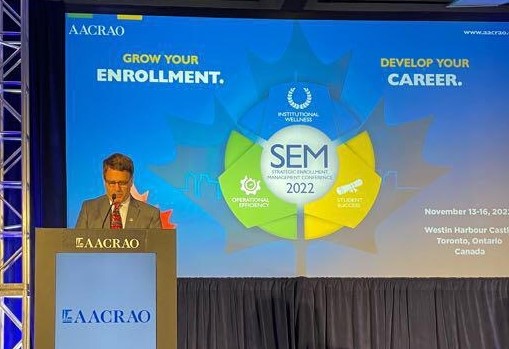
Subsequent writers have incorporated these words into their SEM definition: concepts and processes, institutional mission, and students’ educational goals (Bontrager, 2004); comprehensive process and academic contest (Dolence, 1993); comprehensive and coordinated process, and integration (Kerlin, 2008). The fundamental premise of SEM is that we must look at our enrolment health and sustainability throughout the entire student experience. Today, SEM has evolved to being a strategic component of institutional planning, resulting in:
- Instructional programs and services designed with intentionality, purpose, integration of effort, service efficiency, and positive interventions with students
- Integrated cross-campus collaborations and partnerships between faculty, administrators, and staff
- Use of assessment information-driven decision making
- Understanding how campus cultures impact enrolment management efforts
- Importance of shared leadership at multiple levels
Let’s simplify. The Cheshire cat in Lewis Carroll’s Alice in Wonderland says, “If you don’t know where you are going, any road will take you there.” Yogi Berra, of New York Yankees fame, adds “If you don’t know where you are going, you might wind up someplace else.” And today, we have got some great places to go!
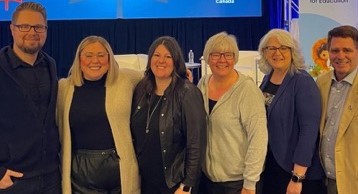
With my glass is half full approach, I can see some magical destinations. The first one is all about social justice. When we started doing SEM in the late 1970s, higher education was still a place where only some could go. Today, the door is open for many more, but not all. We need to put our collective heads together to ensure that our doors, both at the front end and at completion, are open to all who wish to continue their education. This includes Indigenous and racialized students, low-income and rural students, first-generation learners, and so many more. Second, we need to find ways to mature SEM into what many of us hoped it would become; namely, a managerial and educational framework. We are pretty much there with the former but have more distance to go to achieve the latter. SEM could be and should be a contributor to both of these goals.
Let me end with a passage from “The Effectiveness of SEM in Canada: Reflections from the Field” (2022, 53) that captures a possible future direction that the SEM community can traverse in the years ahead.
As the changing economy, politics, and student demographics have hit our institutions, it is ironic that we have been reluctant to explore difficult decisions and be truly strategic. Over the past few years, we have seen institutions of all types respond to these shifting pressures in similar ways–looking to international markets to replace domestic students, trying to rebrand and evolved into a different type of institution (changing from two-year to a four-year college, or an undergraduate into a graduate research institution), focusing on student retention. Can we use the SEM toolbox in new and innovative ways? We hope that the insights provided by SEM professionals across Canada will help higher education colleagues in institutions coast-to-coast build strategic plans that support students and institutions.
-Clayton Smith
References:
Bontrager , B. ( 2008 ). A definition and context for current SEM practice. In B. Bontrager (Ed.), SEM and institutional success: Integrating enrollment, finance, and student access. Association of Collegiate Registrars and Admissions Officers.
Dolence, M. G. (1993). Strategic enrollment management: A primer for campus administrators. American Association of Collegiate Registrars and Admissions Officers and Datatel.
Hossler, D., & Bean, J. P. (1990). The strategic management of college enrollments. Jossey-Bass.
Kerlin, C. (2008). Community college roadmap for the enrollment management journey. College and University, 83(4), 11.
Beyond COVID: A SEM Perspective
There has been so much discussion about “getting back to normal” or creating “the new normal” during these pandemic times. What we know is that, with past pandemics, we have seen the upending of critical structures, such as health systems, economic life, socioeconomic class structures, and race relations. (De Witte, 2020). The impacts have included the way our institutions and communities operate, as well as how family members interact with one another. Today, I find myself wondering what the impact will be on post-secondary education and how it will adjust to whatever normal that may emerge following the COVID-19 experience.
A short time ago, I had the pleasure to convene a webinar panel discussion, Coming Out of COVID, in which four enrollment leaders from the U.S. and Canada shared their views on how post-secondary institutions will approach life after the pandemic. A common thought was the need to develop a sense of urgency on campus so that the pinnacles of SEM can be maintained (institutional wellness, operational efficiency, and student success). Some of what they said also touched on these topics:
- Communications, communications, and more communications
- Flexibility
- Finding the right balance between online and in-person student experiences
- Supporting the staff who serve at the student touch points
- Variable impact on different student populations, and that one process may not work for everyone
- Affordability, with many students left with financial challenges due to the pandemic
At the recent American Association of Collegiate Registrars and Admissions Officers Strategic Enrollment Management Conference (the first in-person conference I have attended in two years!), we heard from our keynote speakers on this topic. Here are a few highlights:

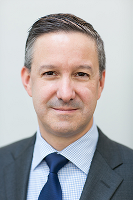
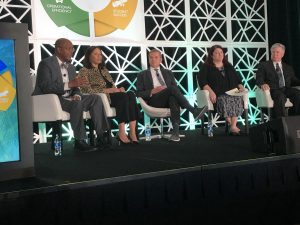
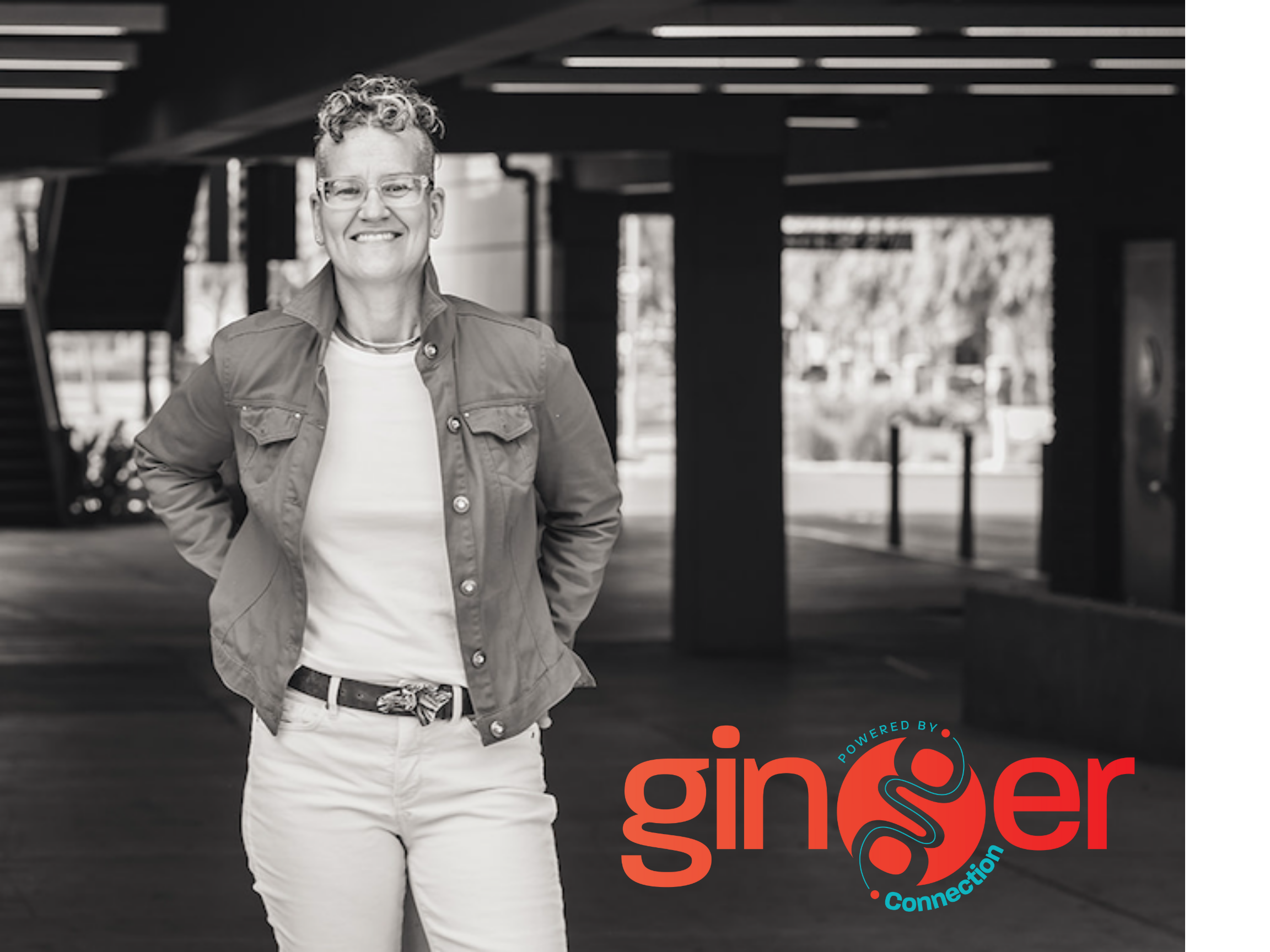
- Dr. Gregory Fowler, president of University of Maryland Global Campus, called on us to “improve end-to-end the student experience.” He challenged us to cultivate human skills, recognize that learning is everywhere, and educational institutions need to support the learning that people need across their lifetime.
- Jeff Selingo, author of two New York Times bestsellers , College (Un)Bound and There is Life After College, and the new book Who Gets in and Why: A Year Inside College Admissions (which he signed a copy for me!), described the student experience as about learning “how to negotiate relationships.”
- A higher education panel (Dr. Monica Parrish Trent, Achieving the Dream; Dr. Dhanfu Elson, Commplete College America; Dr. Kevin Pollock, Central Carolina Technical College; and Laura Clark, Virginia Community Colleges) spoke about the importance of supporting learning and student success across all student demographics, with a particular focus on those who start their post-secondary learning in community colleges.
- Ginger Johnson spoke about “At the Table of SEM,” we need to move from networking to connecting; that by connecting with each other, we can truly transform our learning organizations. Specifically, she called on us to 1) seek alignment as a way to transform our institutions and not just change them, 2) keep things simple by being productive while being “seen, valued, and heard,” and 3) support belonging by “always having time to connect” with one another. Ginger graciously left us with signed copies of her book, Connectivity Canon: Why and How to Connect with People on Purpose with a Service Mindset.
Pulling all of this together and reflecting on what our new normal will become, I find myself being optimistic regarding all the things we can do in higher education. It also makes me return to my teaching philosophy, Teaching for Learning, in which I describe education from the learner’s perspective; that our task is to create “educational environments that enhance learning and by engaging students individually in ways that inspire them.” This can best be done when we attend to the SEM trilogy of student success, institutional wellness, and operational efficiency while taking into account our takeaways from the pandemic.
I can hardly wait to see what we come up with!
-Clayton Smith
De Witte, M. (2020). Past pandemics redistributed income between the rich and poor, according to Stanford historian. Stanford News. https://news.stanford.edu/2020/04/30/pandemics-catalyze-social-economic-change/
Moving Toward the Re-imagined University
Higher education may have been forever changed by the COVID-19 pandemic.
A Pearson Global Learner Survey (2020) found that of three, out of every four, global learners believe that “education will fundamentally change as a result of the pandemic” (p. 5) and colleges and universities will fundamentally change. Most think that online learning will be part of the university student experience post-pandemic. And, interestingly, trust in education is rising as education systems receive higher marks than ever for quality, despite all the disruption resulting from the pandemic.
One educational consultant, Marguerite Dennis (2021), commented recently that the pandemic experience has highlighted a number of issues of concern. Some of these include rigid enrolment procedures, poor retention rates, lack of alignment between academic credentials and employable skills, mental health needs of students, space utilization, and relationships with students before and after graduation. Dennis believes it is time for higher education to create the “reimagined university.” Reimagined universities would be led by chief executives who have both the vision and ability to champion new ways of leading their institutions and can lead their institutions to embrace life-long learning.
The University of Windsor has begun to embrace this challenge. Dr. Robert Gordon, president and vice-chancellor at the University of Windsor recently commented,
It’s going to be a different world when we go back to some of the ‘new normal.’ There are going to be different and heightened expectations of how people interact with one another, but I think its going to be appropriate for us to make sure that we’ve learned from this and that we can adopt new approaches to how we support our institution through those lessons learned.
Mighton, 2021, p, 23
One pathway to consider comes from the world of strategic enrolment management (SEM), which has helped institutions face the challenges that have come our way previously. We have seen natural disasters, economic recessions, and changing demographics. By applying SEM principles, we have successfully led our post-secondary institutions toward enrolment health and student success.
The core SEM purposes include:
- Creating a data-rich environment to inform decisions and evaluate strategies that support strategic dexterity and identification of scenarios;
- Establishing clear goals for the number and types of students needed to fulfill the institutional mission and building options and scenarios;
- Promoting students’ academic success by improving access, transition, persistence, and graduation;
- Promoting student and institutional success by assuring effective academic program planning and assessing options to match need and demand;
- Improving process, organizational and financial efficiency and outcomes; and
- Increasing communication and collaboration among departments across the campus to support healthy enrolment and a healthy institution.
Smith and Kerlin (2020) suggest pursuing these purposes by using six SEM tools to manage our way through these changeful times. They include systems thinking, link-integrate-extend, strategic dexterity, building scenarios, collaboration, and change management.
The key to unleashing SEM to help our institutions confront the significant challenges that lie before us is to engage in collaborative dialogue across the campus to ensure that each of us can find effective ways to support the development of our re-imagined universities.
-Clayton Smith
References:
Dennis, M. (2021). Imagination and innovation in higher education, bulletin 46. Naples, FL: MJDennis Consultants.
Mighton, D. (2021). The life of a wartime president: Robert Gordon discusses the effects of the pandemic on University of Windsor students. The Drive, 34, 22-23.
Pearson (2020). The global learner survey. London: Pearson. https://www.pearson.com/content/dam/one-dot-com/one-dot-com/global/Files/news/gls/Pearson_Global-Learners-Survey_2020_FINAL.pdf
Smith, C. & Kerlin, C. (2020). SEM Institute. Presented at the 2020 virtual AACRAO Strategic Enrollment Management Conference. Washington, DC: American Association of Collegiate Registrars and Admissions Officers.
A Tale of Two Cities
Today, I find myself reflecting on Charles Dickens’ 1859 historical novel, A Tale of Two Cities, in which he tells the story of French doctor Alexandre Manette, released from the Bastille prison after an 18-year imprisonment, which was based on dubious charges. Dickens describes the conditions leading up to the French Revolution and the Revolution itself, that connects the arrogant behavior of the aristocracy to the revolutionaries’ political, social, and economic demands for justice. Dickens sets forth the idea that resurrection and transformation are both possible on personal level and societal levels.
In the opening sentence, Dickens writes:
It was the best of times, it was the worst of times, it was the age of wisdom, it was the age of foolishness, it was the epoch of belief, it was the epoch of incredulity, it was the season of Light, it was the season of Darkness, it was the spring of hope, it was the winter of despair, we had everything before us, we had nothing before us, we were all going direct to Heaven, we were all going direct the other way—in short, the period was so far like the present period, that some of its noisiest authorities insisted on its being received, for good or for evil, in the superlative degree of comparison only.
Much of what Dickens saw in the 19th century is reflected in our discussions today regarding the crises facing higher education in North America. Many of us continue to believe that through resurrection and transformation, we can change as individuals and as a society. What is increasingly clear is that we cannot go it alone. We will need to find ways to join together to improve and transform our individual post-secondary educational institutions and the system of higher education as a whole.
Let’s think on this within the context of the two major crises that are present in our world now.
As of today, according to the World Health Organization, there are 8,708,008 confirmed cases (nearly 30% in North America alone) and 462,715 deaths attributed to the COVID-19 pandemic, resulting from an infectious disease caused by a newly discovered coronavirus. Henry Chesbrough, Faculty Director of the Garwood Center for Corporate Innovation at the Haas School of Business at UC Berkeley, writes that the pandemic “is placing many universities under extreme budget pressure, owing to the loss of high-margin international students” (para 1) that may result in some campuses not opening in the fall and others further discounting tuition to students. Many other institutions have announced plans to offer online only or mostly online instruction. Taken together this will likely impact educational access and success for first generation, marginalized and low-income students.
On May 25th, George Floyd, a 46-year-old black man, was killed in Minneapolis by a white police officer, who knelt on Floyd’s neck for almost nine minutes while Floyd was handcuffed and lying face down, begging for his life and repeatedly saying “I can’t breathe.” (BBC, 2020) This has led to demonstrations in the U.S., Canada, and throughout the world against police brutality, police racism, and a lack of police accountability. Post-secondary leaders responded by issuing statements that “condemned the killing of Floyd and implored the community to seek out opportunities for kindness.” (Burke, 2020, para 1) Conversations and actions to address systematic racism will likely dominate discussions at North American campuses in the months and years to come.
The questions that are central to my reflection are these:
- What is the role enrollment management should play in responding to these crises?
- What can or will the enrollment management community do to address each of these crises?
- How will we position ourselves to be ready to help our institutions with future crises?
I believe that we are up to the tasks that lie ahead, but also believe it will take more than individual effort to make a difference. We will need to come together as colleagues and caring persons to face these challenges and respond to these important questions. Toward that end, our national association, the American Association of Collegiate Registrars and Admissions Officers, has decided to face these questions by convening the 2020 Strategic Enrollment Management Conference virtually and focus on the theme, “Crises as Catalysts for Transformation: 2020’s Impact on Higher Education and Enrollment.”
As the conference director, let me encourage you to submit a session, stop and share, poster, or roundtable proposal that highlights your experiences, best practices, and solutions. The Call for Proposals is now open. The proposal due date is July 31, 2020.
If I can be of any assistance, please write to me at smithc@aacrao.org.
-Clayton Smith

References
BBC News (May 30, 2020). George Floyd: What happened in the final moments of his life. https://www.bbc.com/news/world-us-canada-52861726
Burke, L. (June 1, 2020). College leaders respond to death of George Floyd. Inside Higher Ed. https://www.insidehighered.com/quicktakes/2020/06/01/college-leaders-respond-death-george-floyd
Dickens, C. & Schama, S. (1990). A tale of two cities, book the first, chapter 1. New York: Vintage Books.
Furber, M, Burch, Audra D. S., and Robles, F. (May 29, 2020). What happened in the chaotic moments before George Floyd died. The New York Times. https://www.nytimes.com/2020/05/29/us/derek-chauvin-george-floyd-worked-together.html
World Health Organization (June 21, 2020). WHO Coronavirus disease (COVID-19) dashboard. https://covid19.who.int/
Achieving Personal Mastery with SEM
In idealistic-pragmatist, Peter Senge’s The Fifth Discipline (1990), one of the five disciplines is personal mastery (the others are systems thinking, mental models, building shared vision, and team learning). Senge writes, “Organizations learn only through individuals who learn. Individual learning does not guarantee organizational learning. But without it no organizational learning occurs” (p. 139) So, for our institutions to grow, each of us must find our own path to personal mastery.
Senge describes personal mastery as “the discipline of continually clarifying and deepening our personal vision, of focusing our energies, of developing patience, and of seeing reality objectively” (Ibid, p. 7).
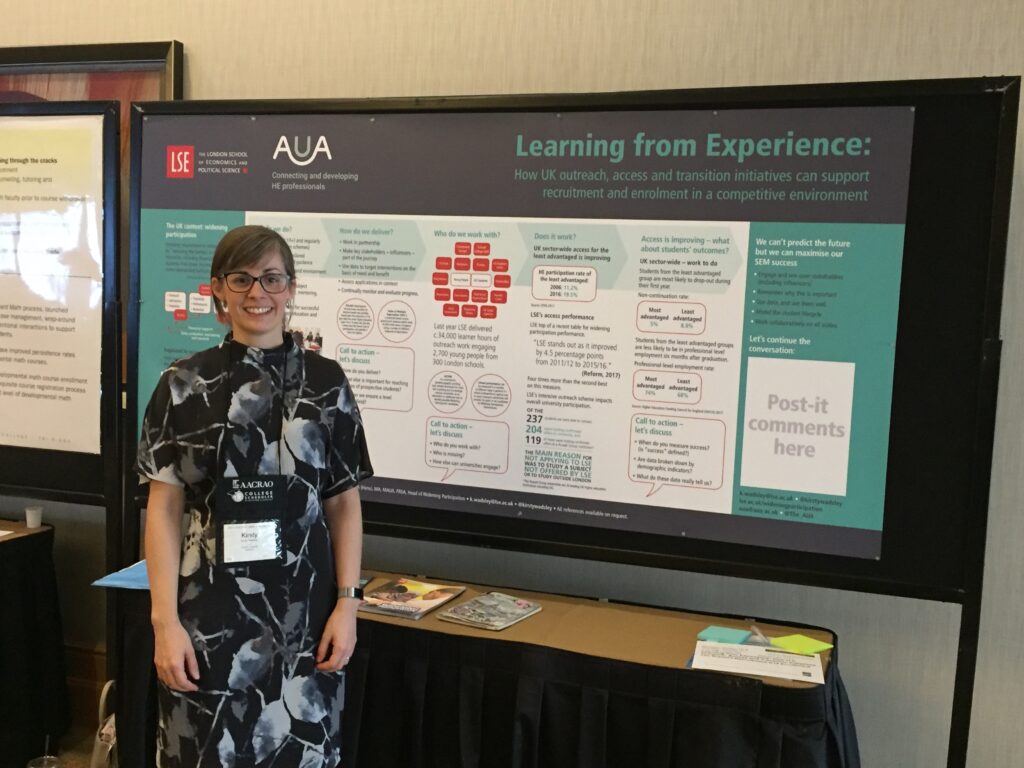
For enrollment managers, one of the ways of achieving personal mastery is through developing professional competencies and proficiencies in Strategic Enrollment Management (SEM). For those new to SEM, here is one of my favorite definitions:
Enrollment management is a comprehensive and coordinated process that enables a college [or university] to identify enrollment goals that are allied with its mission, its strategic plan, its environment, and its resources, and to reach those goals through the effective integration of administrative processes, student services, curriculum planning, and market analysis.” (Kerlin, 2008)
This can be achieved by reading some of the SEM classics and the SEM Quarterly journal, or by continuing the development of personal mastery by engaging with colleagues engaged in their own professional development.
Some will choose graduate programs or courses/experiences that culminate in a certification of some type. But for many of us, it is about coming to the AACRAO Strategic Enrollment Management Conference, which is celebrating this year its 30th conference in Las Vegas on October 25-28, 2020. Topics typically include: SEM culture, leveraging technology and data, career development, student success, and reaching optimal enrollment.
An important way to contribute to your own personal mastery in SEM is to actively participate in the conference. Currently, conference planners are promoting a Call for Proposals, where you can submit proposals for a best practice session, a poster, round-table, or a stop and share discussion on SEM hot topics, SEM research, or innovative ways institutions are implementing SEM. Proposals from multiple institutions or types of institutions are encouraged, as are proposals from Canadian and international institutions.
If you are thinking of submitting a proposal and want to discuss some ideas, send me an email at Clayton.Smith@uwindsor.ca (I am the director of the AACRAO SEM Conference!).
Whether you submit a proposal or not, let me encourage you to join us in Las Vegas this fall to enhance your personal mastery with SEM.
-Clayton Smith
Kerlin, C. (2008). Community college roadmap for the enrollment management journey. College and University, 83(4,), p. 11.
Seng. P. M. (1990). The fifth discipline The art and practice of the learning organization. New York: Currency, Doubleday.

Providing SEM Leadership in Times of Disruption
At this week’s Canadian Strategic Enrolment Management (SEM) Summit, we discussed SEM leadership in times of disruption. We focused on how changes in institutional leadership, governments, and technologies affect SEM performance. In particular, we discussed the impact of disruption on building community and international engagement.
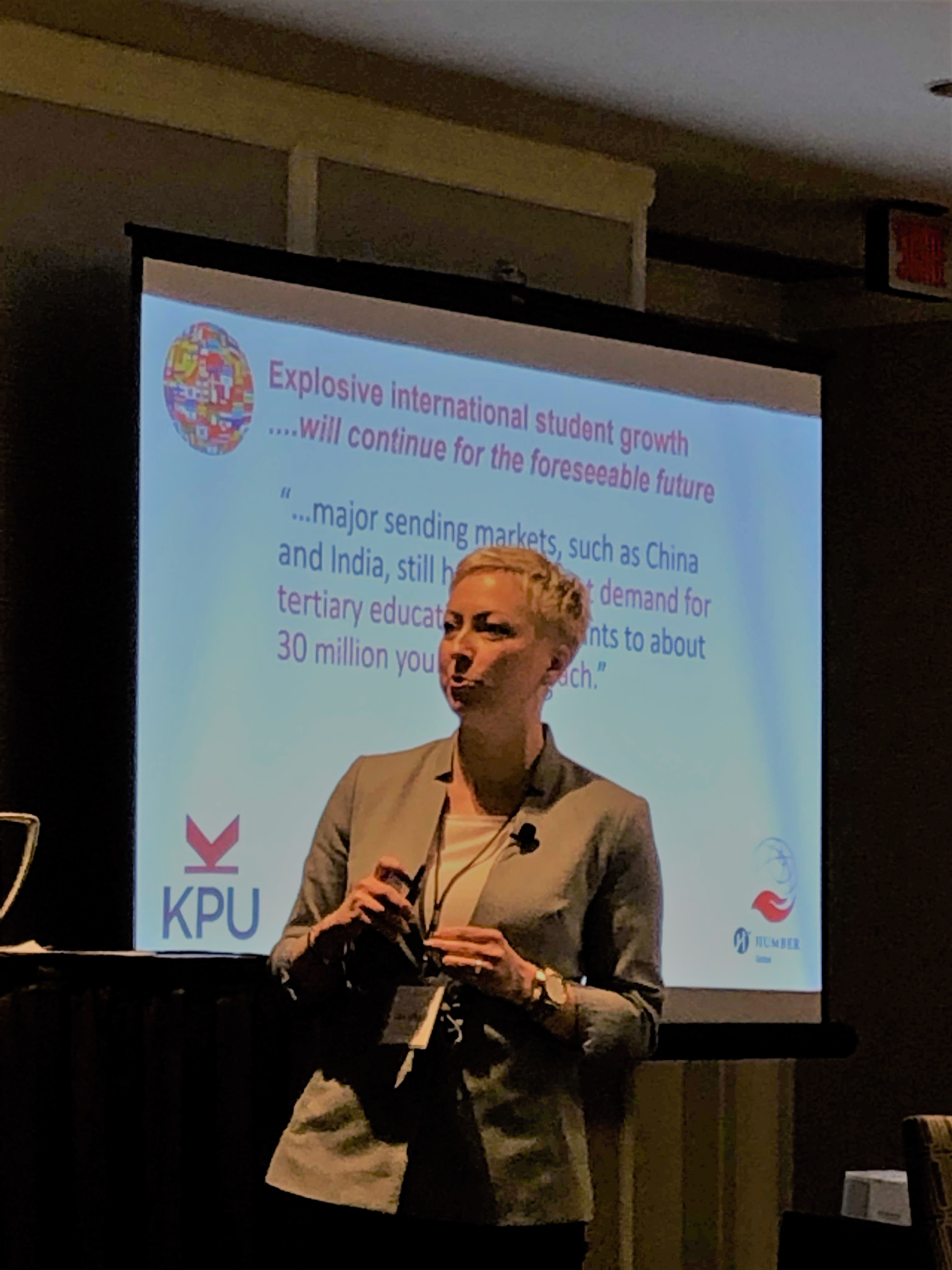
Some of our discussion points included:
- Who should be around the table when a disruption occurs? Are groups already formed, or is there a need to develop new groups?
- How do we get the data needed for decision-making? Some may already exist, but new data may also be needed.
- While disruption can leave us perplexed, we need to find ways to keep our sense of purpose while managing SEM during challenging and distracting times.
- Disruption can be an opportunity to try something new or to focus the institution more clearly on its educational values and aspirations.
- The growing challenge of maintaining data privacy and security in turbulent times.
- The opportunity disruption provides to move from competition to collaboration across the higher education sector.
For many, we are already in disruptive times in the area of international student enrolment and engagement. Some talked about the near explosion of international student enrolment in recent years, especially for students from India. We heard about how this challenge might be a way of bringing together budget and SEM; that sometimes disruption can be internal; that budget drives culture; and opportunities flow from effective brainstorming across institutional silos. We were reminded of the importance of supporting international students, both personally and academically, as they enrich our institutions.
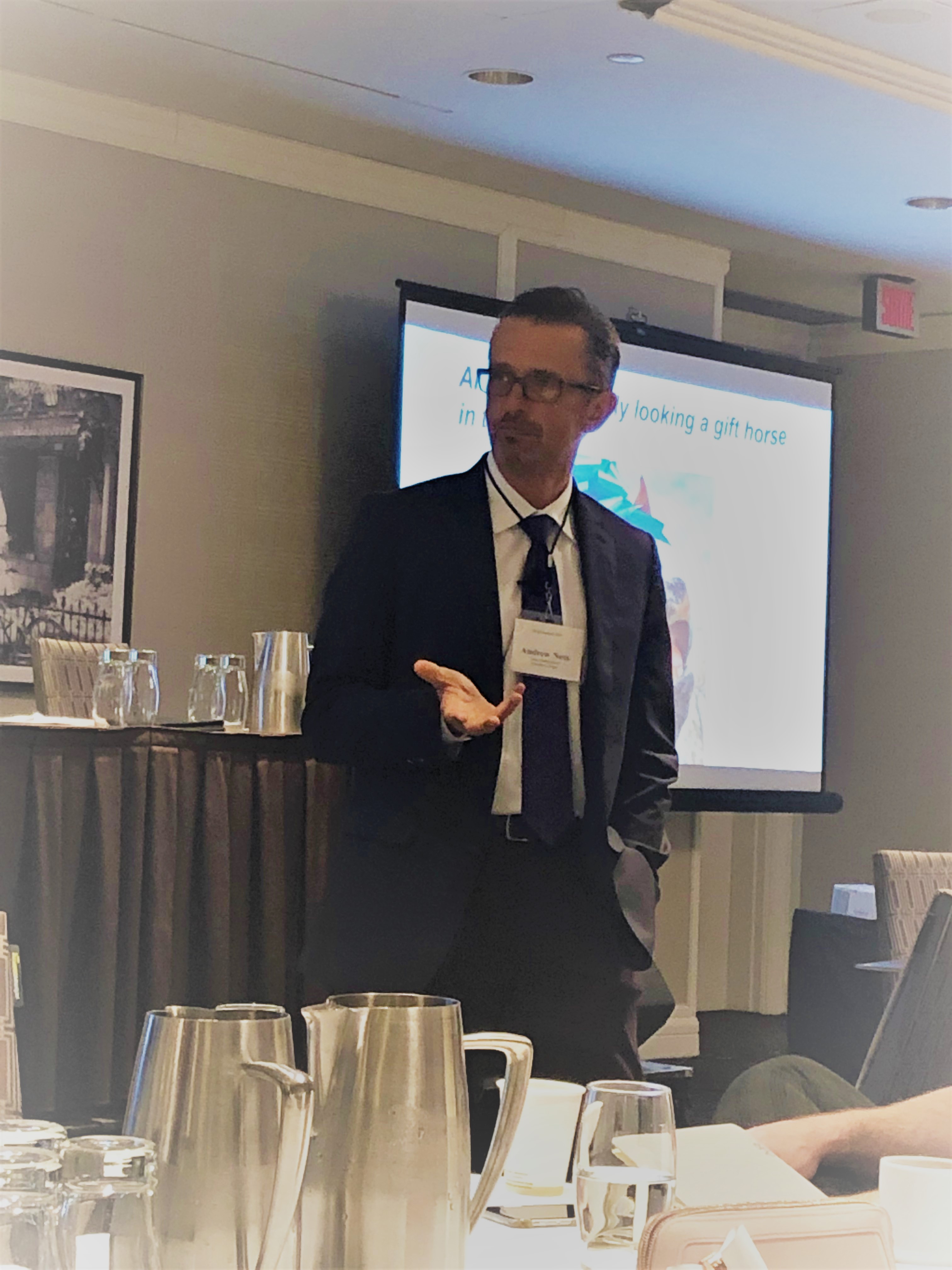
Jason Hunter, Vice President, Student and Community Engagement, at Humber Institute of Technology and Advanced Learning put it well when he said the Summit helped us “to frame critical issues” and “to build capacity” by developing a strong SEM network of administrators and educators across Canada. We all experienced a little SEM therapy.
For me the key take away is the importance of encouraging collaborative dialogue and planning for disruption as we work to enhance institutional health and student success through our SEM work.
Feeling renewed!
Clayton Smith
Recent Comments